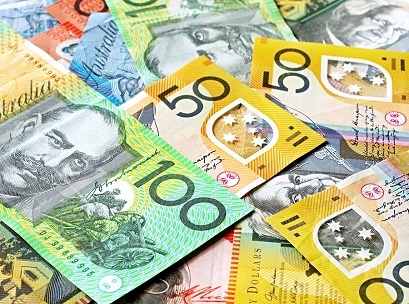
The Australian dollar has fallen Wednesday, buying 68.74 US cents from 68.99 cents on Tuesday.
Yesterday, the local currency was at 68.99 US cents from 69.08 US cents on Monday.
Monday, it was at 69.10 US cents from 69.42 US cents on Friday.
On Friday, the Aussie was at 69.51 US cents from 69.77 US cents on Thursday.
On Thursday, the yields on Australian 10-year bonds have hit an all-time low after RBA Governor Philip Lowe said interest rates will stay low for a long time.
The Australian dollar eased after Reserve Bank of Australia Governor Philip Lowe reiterated that policy could be eased again if needed and emphasised that interest rates would be staying low for an “extended” period of time, boosting bonds.
The Aussie slipped 0.1 per cent to 69.67 US cents on the comments, while yields on 10-year bonds dropped to all-time lows around 1.24 per cent.
Dr Lowe’s new outlook on keeping rates low was taken as a step into forward guidance and taken as a dovish development by the bond market.
Lowe later said he would not characterise it as “forward guidance”, but the market still chose to take it that way.
Lowe also rejected calls for a shift in the RBA’s long-term inflation target of 2-3 per cent, saying evidence did not support a change.
There had been talk the inflation target could be softened, say by widening it to 1-3 per cent, which might lessen pressure for further rate cuts.
Yet, neither did Lowe sound in any hurry to ease again noting that it was possible the two cuts already delivered would revive growth enough to lower unemployment and lift inflation.
Rates are already at a record low of 1 per cent after quarter-point cuts in both June and July.
The market implies only an 18 per cent chance of a further cut at the next policy meeting on August 6, but is fully priced for an easing by November.
“Those looking for another quick follow-up rate cut should think again,” said James Craig, chief economist at CommSec.
“The Reserve Bank Governor now wants to sit back and see how the situation evolves. But clearly additional rate stimulus is possible if required.”
Bond investors were pleased that rates would be low for longer, with the three-year futures contract up 3 ticks at 99.165 after touching a lifetime high of 99.180.
The 10-year bond contract also made a record peak and was last 4.5 ticks firmer at 98.7400.
Across the Tasman, yields on New Zealand two-year notes touched all-time lows at 1.11 per cent, while the kiwi dollar dipped slightly to 66.99 US cents.
Markets are wagering heavily the Reserve Bank of New Zealand will cut its official cash rate at a policy meeting on August 7, if only to stop the kiwi from rising should the Federal Reserve ease as expected next week.
“We expect the RBNZ to cut by 25bps to 1.25 per cent on August 7, and signal potential for more,” said Imre Speizer, head of NZ market strategy at Westpac.
“We expect a follow-up cut in November to 1.0 per cent, with a risk this is delivered in September, and the OCR ultimately falls below 1.0 per cent,” he added, recommending investors sell the kiwi around 67.05 US cents.





